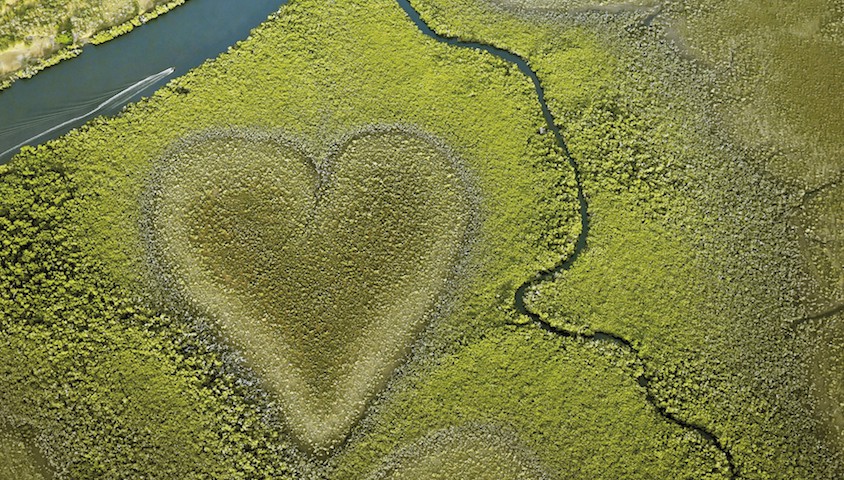When travellers think of New Caledonia, they tend to think of French food, relaxing on the beach with a cocktail (or baguette) in hand, or sailing out into the wild blue yonder. But what many people don’t know about this island destination is that it boasts some of the most colourful, bizarre and exotic wildlife in the world.
As an archipelago, like the Galapagos Islands in the northern hemisphere but much closer to home, New Caledonia is a place of diverse and distinctive landscapes and ecosystems. From its terrestrial woodlands to its aquatic wonderland, there is extraordinary flora and fauna to be found, with nearly 75 per cent of species being endemic to the islands and its waters.
Often referred to as a biodiversity hot spot, New Caledonia is inhabited by an abundance of creatures, with marine species including the dugong, giant clams and over 1000 species of fish, while less capable swimmers like the flightless kagu are endemic to the dense mountain forests like those in Riviere Bleue or Grande Terre.
Birdwatching on the islands is a popular activity and the endangered kagu is one of the most sought-after bird species. With its grey-white plumage, raised crest, long red legs and a call that has been said to resemble the sound of a small dog barking, it is quite striking. Strutting around the forest floor, the kagu spends its time on the ground, where it builds nests of sticks and as a carnivore, hunts its prey. The official emblem of New Caledonia, the kagu is celebrated for its distinctive and peculiar qualities and enjoys full protection on the island. Conservation efforts and breeding programmes have been underway for some time for this bird, with good results being seen in the Riviere Bleue Territorial Park.
In Noumea, birdwatching excursions afford fantastic encounters with the playfully-named coconut lorikeet, the dark-eared honeyeater and the green-backed white eye, while a trek through Bourail can surprise and delight with range of native birdlife.
The vast lagoon is one of the largest marine reserves in the world and one of considerable environmental significance and interest. Registered as a UNESCO World Heritage site, the lagoon’s coral reef provides one of the main nesting sites for the green turtle, along with housing hawksbill turtles, loggerhead turtles, leatherback turtles and several rare crab species. Over 23 species of tropical seabirds like boobies, noddies and frigatebirds also soar over the lagoon, while the rarer New Caledonian fairy wren can be harder to spot.
Each year, the beginning of the cool season in July heralds the return of the humpback whales to the deep blue of the lagoon. As these majestic creatures swim back from Antarctica to escape the cold and give birth in the warmer waters of the South Pacific, they can be seen jumping and saluting with their fins. This phenomenon is one of the most beautiful to behold and can be witnessed south of the Grand Terre (the main island) where these magnificent giants are most numerous.
In northern Grande Terre, unusual geological formations and jagged cliffs jut out over and fall into the ocean, offering a fascinating spectacle. There is also the aptly-named La Poule (chicken) rock formation, which is said to have sprung spontaneously out of the water many years ago, and uncannily resembles a chicken. These incredible seascapes are just another example of New Caledonia’s varied scenery.
Heading further south, into the heart of the Grand Sud (Far South) and deep in the provincial reserve of the same name, in the Plain of Lakes, a botanical treasure-trove and La Madeleine waterfalls await. In the New Caledonian Maquis shrubland reserve, there is rich vegetation and flora, much of it endemic to the island. The reserve covers a surface area of 400 hectares and provides shelter for 168 plant species (from 53 botanical families), of which 95 per cent are endemic to New Caledonia. The reserve also holds some of the oldest conifers, some over 245 million years old.
Other plant species include the mangroves of New Caledonia, often referred to as Mysterious Mangroves for their ecological richness and unique growth patterns, like the famous Heart of Voh, which from the air resembles a colossal, lush, green heart. The Isle of Pines, one of the most desirable tourism destinations, is home to the emblematic columnar pine tree, a conifer which on mass look like an army of extra-tall Christmas trees.
With such an astounding array of wonderful wildlife just three hours away, New Caledonia is the ideal place for nature lovers to embark on their next adventure.



